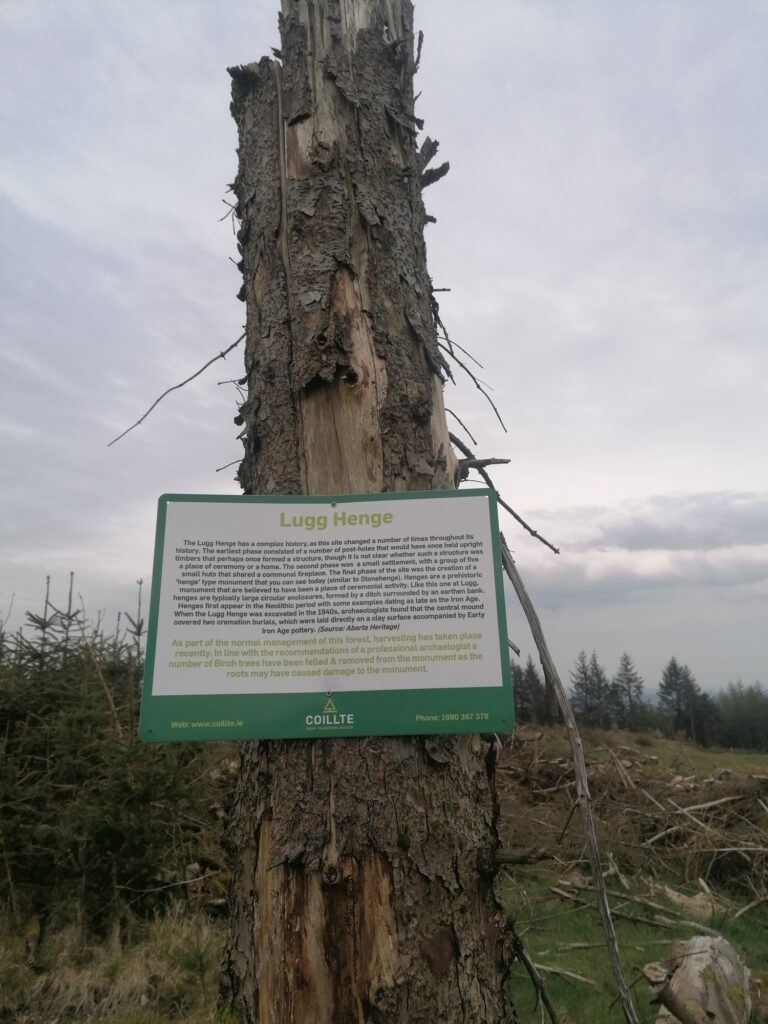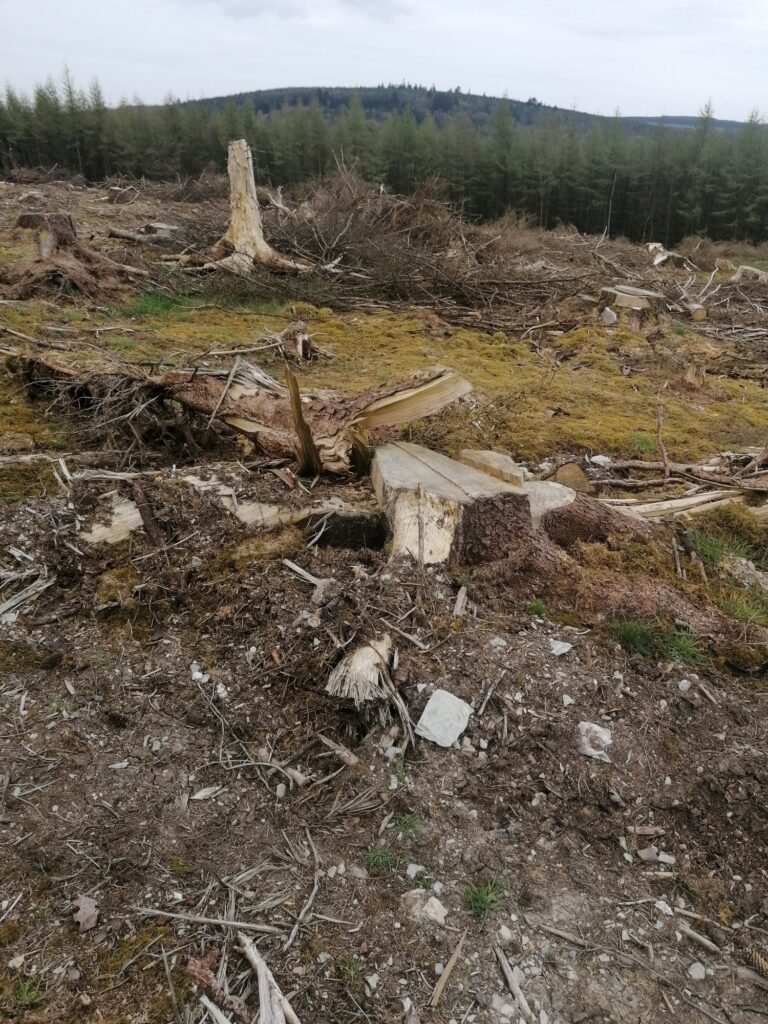A concerned local resident recently contacted Newsgroup with some images of the Lugg Forest, where in the last year trees were felled very close to the historic monument of Lugg Henge. The forest has become more popular than ever for walkers during recent restrictions.
Emer Higgins TD for Dublin Mid West commented “The Lugg forest is a fantastic amenity to have locally. While we were all stuck to our 5km limitations, people had the opportunity to explore their local area better, and I know many kids found the forests around Saggart and Rathcoole fantastic places to adventure in. The Lugg Henge is archeologically significant and it’s really important that it’s monument is preserved and protected. Birch trees that had naturally seeded and grown within the monument were blown down by wind resulting in a potential impact upon the monument .”

The local TD wrote to Coillte to request further information, the reply was as follows “I have been in consultation with our local management team in relation to our forest plans at Lugg forest. Lugg forest contains a significant archaeological monument. Conifer trees had been planted approximately 40 years ago for wood production near to the monument but outside of it. Over the years though, naturally seeded birch trees had also become established within the footprint of the monument. Some of the trees within the monument had been blown by wind which could potentially impact upon the monument.
All tree felling in Ireland is carried out under licence by the Forest Service, of the Department of Agriculture, Food and the Marine. As part of the licensing process Coillte engaged a qualified archaeologist to prepare a plan for the area ahead of tree felling to protect the monument during forest operations. The advice given was that trees in the vicinity of the monument should be felled by harvesting machine, and the trees within the footprint of the monument should be carefully felled by chainsaw and subsequently removed from within the footprint. These works were carried out and Coillte, who then consulted and shared this approach with the Forest Service, Department of Agriculture, Food and the Marine, who indicated that works were conducted appropriately and in line with the archaeological advice given for the site.
Coillte’s standard practice is to replant all areas where trees have been felled and replanting will occur in Lugg forest. In order to safeguard the monument into the future a 20 metre buffer zone is established around the perimeter of the monument where no trees are planted” .
“I understand that Coillte worked with a qualified archaeologist to address those trees and in consultation with the Forest Service and the Department of Agriculture, when felling the conifers in the surrounding area. I would encourage people to visit the historic monument now that it’s easier to find, new signage has been erected providing information on this gem in our community,” concluded Deputy Emer Higgins.


